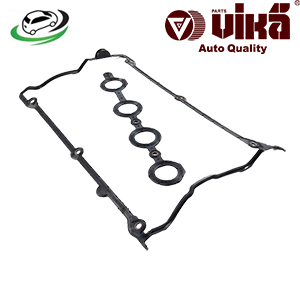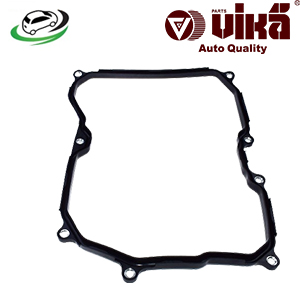-15%
Get Automatic Transmission Output Shaft Seal Audi A3/S3 Q3 TT / VW Beetle Nove/Passat/Tiguan/Polo 09G301189
The automatic transmission output shaft seal is a vital component in a vehicle’s transmission system, designed to maintain the integrity of the transmission fluid within the gearbox and prevent leaks. This comprehensive guide explores the construction, function, benefits, common issues, signs of failure, and maintenance of the automatic transmission output shaft seal.
Construction and Function of an Automatic Transmission Output Shaft Seal
Construction:
- Materials:
- Rubber and Elastomers: The seal is typically made from high-quality rubber or elastomers, which provide flexibility and durability.
- Metal Reinforcement: Some seals are reinforced with metal to enhance structural integrity and ensure a tight fit.
- Spring Tensioners: Many seals include spring tensioners that help maintain constant pressure against the shaft, improving the seal’s effectiveness.
- Design:
- Lip Seal Design: The seal features a lip design that fits snugly around the output shaft, creating a barrier to prevent transmission fluid from leaking.
- Single and Double Lip Seals: Depending on the application, seals can have a single or double lip for additional protection against leaks.
Function:
- Fluid Containment:
- Preventing Leaks: The primary function of the output shaft seal is to prevent transmission fluid from leaking out of the gearbox where the output shaft exits.
- Maintaining Fluid Levels: By containing the fluid within the transmission, the seal ensures that the fluid level remains consistent, which is crucial for proper transmission operation.
- Contaminant Protection:
- Blocking Debris: The seal also acts as a barrier to prevent dirt, debris, and other contaminants from entering the transmission, which can cause damage and reduce the lifespan of transmission components.
- Ensuring Proper Lubrication:
- Fluid Circulation: By maintaining the transmission fluid within the gearbox, the seal ensures that all moving parts are properly lubricated, reducing friction and wear.
Benefits of an Automatic Transmission Output Shaft Seal
- Leak Prevention:
- Fluid Retention: The seal effectively prevents transmission fluid leaks, ensuring that the transmission operates smoothly and efficiently.
- Cost Savings: By preventing leaks, the seal helps avoid costly repairs and fluid top-ups.
- Transmission Protection:
- Contaminant Exclusion: By keeping dirt and debris out of the transmission, the seal protects sensitive components from damage and wear.
- Optimal Operation: Maintaining proper fluid levels ensures that the transmission functions correctly, preventing overheating and other issues.
- Enhanced Performance:
- Smooth Shifting: Proper fluid levels and lubrication contribute to smooth and precise shifting, enhancing the driving experience.
- Extended Transmission Life: By preventing leaks and protecting against contaminants, the seal helps extend the life of the transmission.
- Environmental Benefits:
- Reducing Spills: By preventing transmission fluid leaks, the seal helps minimize environmental contamination and reduces the need for frequent fluid changes.
Common Issues with Automatic Transmission Output Shaft Seals
- Wear and Tear:
- Aging: Over time, the rubber or elastomer material of the seal can harden, crack, or wear out, reducing its effectiveness.
- Friction: Continuous contact with the output shaft can cause the seal to wear down, especially if the shaft is not perfectly smooth.
- Heat Damage:
- High Temperatures: The transmission operates at high temperatures, which can cause the seal material to degrade or lose its elasticity.
- Thermal Cycling: Repeated heating and cooling cycles can accelerate the wear process.
- Contamination:
- Debris Ingress: Dirt and debris can become trapped between the seal and the shaft, causing abrasion and damage to the seal.
- Fluid Contamination: Contaminated transmission fluid can also degrade the seal material over time.
- Improper Installation:
- Incorrect Fit: An improperly installed seal may not sit correctly on the shaft, leading to leaks.
- Damage During Installation: The seal can be damaged during installation if not handled properly, reducing its effectiveness.
Signs of a Failing Automatic Transmission Output Shaft Seal
- Fluid Leaks:
- Puddles Under the Vehicle: Visible transmission fluid puddles under the vehicle, especially near the transmission area, can indicate a leaking seal.
- Low Fluid Levels: Frequent need to top up transmission fluid may also suggest a leak.
- Transmission Issues:
- Shifting Problems: Difficulty in shifting gears or rough shifts can result from low transmission fluid levels due to a leaking seal.
- Overheating: The transmission may overheat if fluid levels are low, leading to warning lights on the dashboard.
- Unusual Noises:
- Grinding or Whining: Low fluid levels can cause the transmission to make unusual noises, such as grinding or whining.
- Rattling: A loose or damaged seal can cause rattling noises as the output shaft rotates.
- Visible Damage:
- Cracks and Wear: Inspecting the seal may reveal visible cracks, wear, or other damage.
- Fluid Residue: Transmission fluid residue around the output shaft area can also indicate a failing seal.
Maintenance and Replacement of Automatic Transmission Output Shaft Seals
- Regular Inspections:
- Visual Checks: Regularly inspect the area around the output shaft for signs of leaks or damage to the seal.
- Fluid Levels: Monitor transmission fluid levels and look for signs of contamination.
- Timely Replacement:
- Replace When Worn: Replace the seal at the first sign of wear, damage, or leaks to prevent more significant transmission issues.
- Use Quality Parts: Opt for high-quality, OEM (Original Equipment Manufacturer) seals to ensure compatibility and durability.
- Professional Service:
- Expert Diagnosis: Have a professional diagnose any transmission fluid leaks to accurately identify the source and ensure proper repair.
- Proper Installation: Ensure that the seal is installed correctly by a professional to avoid installation-related issues.
- Routine Maintenance:
- Fluid Changes: Regularly change the transmission fluid according to the manufacturer’s recommendations to keep it clean and free from contaminants.
- System Checks: Include the output shaft seal in routine transmission system checks to catch any issues early.
Follow us on Facebook for more parts.



